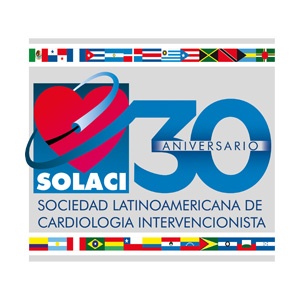
Aside from the potential seriousness of this clinical event, the risk of embolism is particularly worrisome because, in most series, up to 90% of patients presented new lesions as determined through post-procedural magnetic resonance imaging scans. These seem to be silent lesions, but their long-term prognosis is unclear, particularly since TAVR appears to be an increasingly frequent option among lower-risk younger populations.
This study assessed the efficacy and safety of cerebral protection during TAVR with the SENTINEL device, which consists of two filters within a single 6-French catheter placed from the right radial or (occasionally) brachial artery, positioned in the brachiocephalic and the left common carotid artery, over a 0.014-inch guidewire before valve release.
A total of 19 centers randomized 363 patients who underwent TAVR. These were divided into 3 groups: in one, patients received the device; in another, patients received the device and were subjected to post-procedural imaging scans; in the last one, patients constituted the control group. The primary safety endpoint consisted of a composite of major adverse cardiac and cerebrovascular events (MACCE) at 30 days. The primary efficacy endpoint was reduction in new lesion volume in brain territories protected, as assessed through magnetic resonance imaging scans at 2 and 7 days. Patients underwent neurocognitive assessments, and the debris captured was analyzed.
The rate of MACCE (7.3%) was not statistically different from that of the control group (9.9%; p = 0.41). New lesion volume was 178 mm³ in the control group and 102.8 mm³ in both groups receiving the device (p = 0.33).
The rates of stroke at 30 days were 9.1% in the control arm and 5.6% in the device arm (p = 0.25). Neurocognitive function was similar among groups, but it should be noted that there was a correlation between total lesion volume and neurocognitive decline (p = 0.0022).
Debris found within filters included thrombus, calcification, valve tissue, artery wall, and foreign material such as fat threads.
Conclusion
The cerebral protection system was safe and captured debris in 99% of patients without changing neurocognitive function, as compared to that of the control group. Reduction in new lesion volume as assessed through magnetic resonance scans was not statistically significant.
Editorial
The dual filter system increased total procedure time by approximately 13 min, and fluoroscopy by 3 min. It appears to be easy to use, which does not necessarily mean that it is useful. In fact, this has been a hard point to prove throughout history for all filters used in other procedures; we have been satisfied by their safety, in addition to soft endpoints.
Original title: Protection Against Cerebral Embolism During Transcatheter Aortic Valve Replacement.
Reference: Samir R. Kapadia et al. J Am Coll Cardiol 2017;69:367-77.
Get the latest scientific articles on interventional cardiologySubscribe to our weekly newsletter
We are interested in your opinion. Please, leave your comments, thoughts, questions, etc., below. They will be most welcome.




